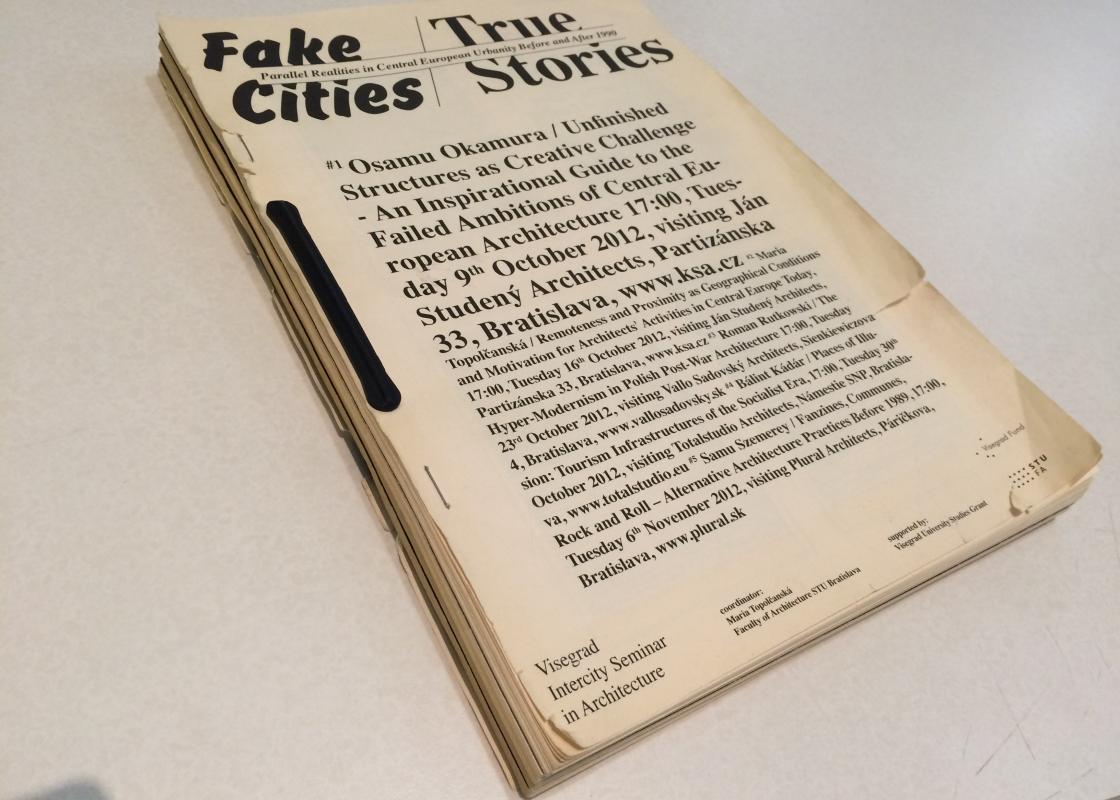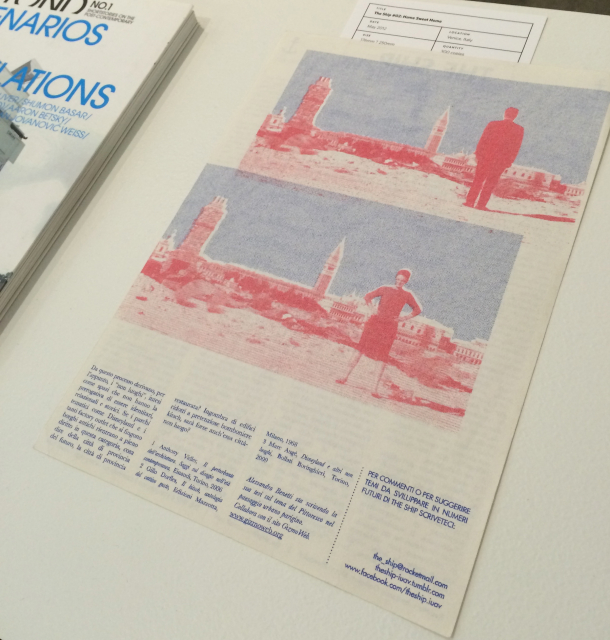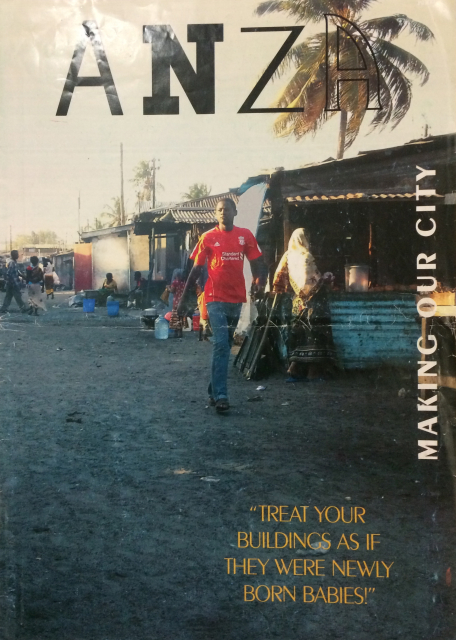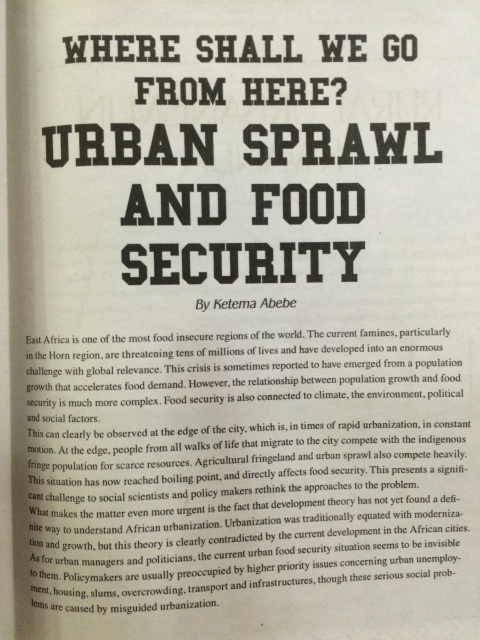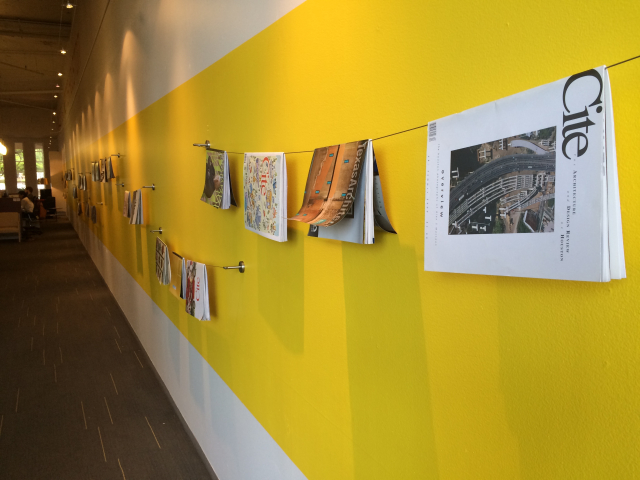Long live print! The Archizines exhibit at the Architecture Center Houston documents an explosion of experiments with paper --- 80 recent magazines, fanzines, and journals from over 20 countries. I did not leave the exhibit with a fully-formed manifesto about the future of architectural publishing beaming out of my forehead onto the page, or screen. I did leave exhilarated, overwhelmed, optimistic, unsure. If there is a single message, it is this: for every purpose there is an energizing print format.
For example, Fake Cities / True Stories appears to be photocopied pages bound with staples and a plastic clip. I’m not sure what those clips are called. The workers at Kinko’s or Copy.com would know. According to the exhibit copy, this weekly was founded in 2012 “as a tool for communication and feedback between lectures and students” at Slovak Technical University. The content and format feels wonderfully raw and immediate. A print version of a Twitter hashtag? Not quite. The print object invests the content. There’s deliberate process, effort, and self-selection if not curation — a meaningful exercise in the digital era.
The Ship is printed by students at the University of Venice on one sheet, front and back, using a risograph. Very, very cheap to produce for small and large runs. This printing technology is used by churches and neighborhood groups because it is even cheaper than photocopying. With great design and art, a riso can be remarkably bright and beautiful. The directness, the physicality, the materiality!
Anza is published by students in Dar es Salaam, Tanzania. The pages are folded into each other using the classic and robust tabloid format on a web press. This format achieves an extraordinary efficiency with print runs over 10,000. Cite began with this format in 1982, and as current editor, I sometimes wish we had never switched to our smaller, perfect bound form. The content of Anza had the greatest urgency of any publication I found in the exhibit. While lost prime farmland caused by the sprawling growth of cities is alarming in Texas, it is truly disturbing to read of it happening in Ethiopia. I felt the most kinship with Anza. One of the editors, a young woman featured in the videos accompanying the exhibit, noted that the word “public” is the root of “public-ations.” That point comes across on the page. Anza is an earnest attempt to reach and communicate with a broad audience.
The vast majority of the publications in Archizines are deliciously obscure. The experimentation with format and the tiny print runs are appropriate to the internal discussions of those publications. Students talking with other students. Historians referring to one another. These publications are one step away from private --- “private-ations”? You are in an elevator with two interesting people in the middle of an animated discussion.
In 2012, the first David Dillon Symposium was held in Dallas at the Nasher. Paul Goldberger, Christopher Hawthorne, Alexandra Lange, Thomas Fisher, and others discussed whether the explosion of digital architecture publications could really replace the weight and authority of critics based at major newspapers and print magazines. Will digital media deliver an expanded audience for architecture, or cacophony? The Archizines exhibit poses an additional set of questions. What role do the exuberant small- and medium-scale print publications play?
In the last 30 years or so, not only have digital publication platforms expanded dramatically, the options for print have broadened too. The perfect-bound book or magazine printed on an offset press holds an inexplicable power over people as a sign of authority, an expensive mystique. We have no excuse not to be thoughtful about format when we do choose print. Even binding with a plastic clip can elevate a conversation!
On April 9, the Architecture Center hosts a panel discussion with Joseph Altshuler (Soiled), Sasha Plotnikova (Plat), and Neyran Turan (New Geographies). Along with the display of Cite and Plat, this discussion is one of the ways the center has added local dimensions. The exhibit ends April 17. Don’t miss it.


